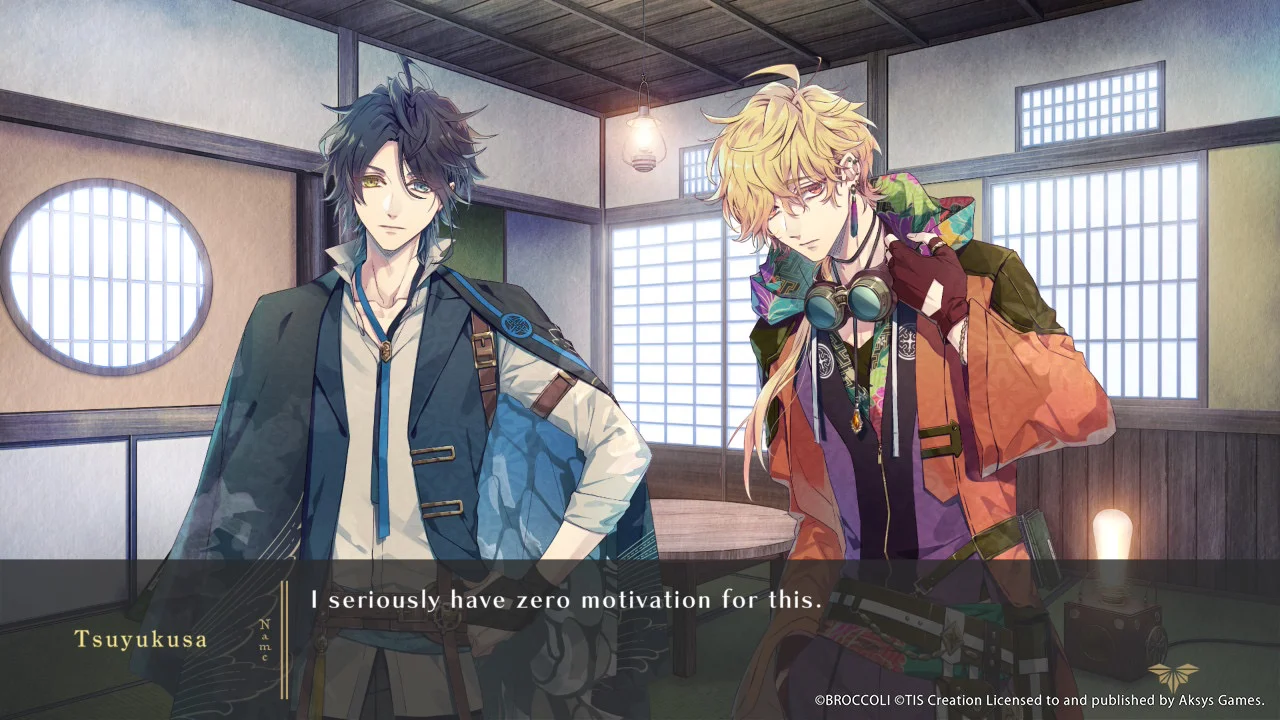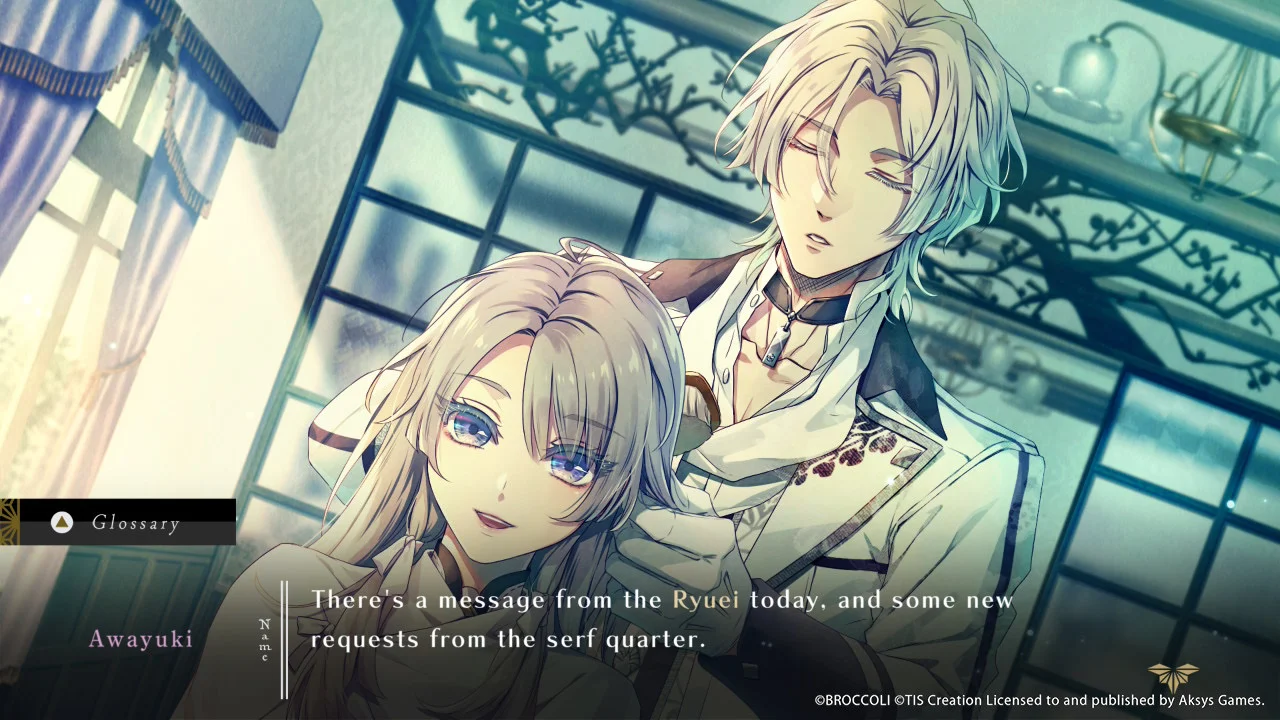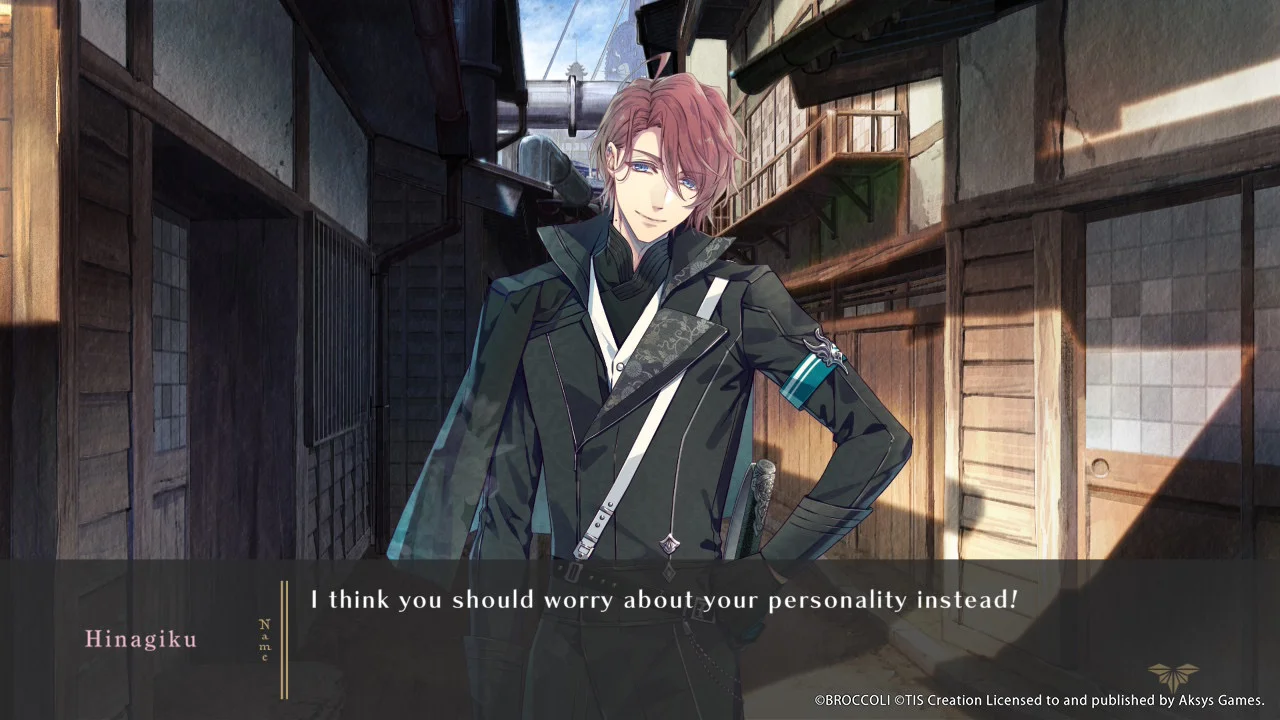An illusion is imagery that appears, for all intents and purposes, to be real. But what if, beneath the facade you’ve known your entire life, buried truths could fundamentally reshape and break all that you know and hold dear? Otome visual novel Illusion of Itehari explores its themes in an altogether compelling narrative about a supposed utopia floating in the sky above an imperfect world.
The airborne city of Itehari is a literal floating paradise, created for its citizens to escape the harsh reality of life on the unforgiving surface world below. Protagonist Hinagiku has lived her entire life amongst the clouds, always wondering what lies beneath but never voicing such prohibited thoughts aloud. That changes one day when she’s nearly the victim of a violent and unthinkable attack in the supposedly peaceful city. Her life becomes entwined with that of her erstwhile savior, a friendly enough self-proclaimed amnesiac named Yashiro, as well as several other interesting characters from various walks of life. Together, they uncover several mysteries and conspiracies surrounding Itehari, revealing that the perpetual paradise might not be as idyllic as Hinagiku grew up believing it to be.
I want to sing praises for Illusion of Itehari‘s narrative, but need to keep it brief to avoid spoilers. The lore and worldbuilding are fascinating and thought-provoking, delving into heavy matters such as the effects of pollution, drug trafficking, isolationism, and classism/discrimination on individual people and society as a whole. Since this is an otome, there’s definitely romance that’s often expertly written, but there’s much more depth to the plot than its multiple love affairs. What’s memorable is the outstanding presentation, with each character’s story arc/route building upon reveals and insights gleaned in others, helping to shape the final route’s culmination as the aptly named Truth Route begins after playing through the previous five routes’ “good” endings. Playing each route thoroughly to grasp the complete plot is very similar to the completionist narrative presentation found in Collar X Malice, awarding players with a thoroughly engaging and compelling conclusion.
Of course, the best story in the world still falls flat if the characters conveying it aren’t memorable. Fortunately for Illusion of Itehari, that’s not the case. The cast, main and supporting, has depth. The five love interests are incredibly fleshed out and intriguing, with often believable romances that realistically develop with Hinagiku depending on their initial interactions. My favorite romance routes were Yashiro’s, childhood friend Tsuyukusa’s, and the head of the entertainment district, Tobari’s, given how believably they develop over time.
Still, I also enjoyed the sincerity and trust that tinted the interactions between Hinagiku and her attendant, Awayuki. The only real problematic romance was with the very prejudiced and manipulative nobleman Yori. The relationship develops as well as it can under the circumstances, but it still has many red flags and uncomfortable moments throughout. Interestingly enough, I actually like the snarky Yori as a “you kind of love to hate” character outside of the romance angle, as his voice actor, Takuya Eguchi, delivers his lines perfectly, and his observations are often amusing. Still, it’s not a romance I particularly felt much for when compared to the others.
Illusion of Itehari‘s side characters and antagonists are also exceedingly memorable, with lots of flourishes to their personalities. I enjoyed playing the game not only for the love interests but also to see how the secondary characters evolve and grow throughout the routes because a reveal in one route helps shed light on why a character reacts the way they do in another, adding further layers to their nuanced characterization. As far as otome main characters go, Hinagiku also deserves some praise. She’s unvoiced and often out of view beyond key CG illustrations, yet her character still stands out. As a noblewoman past the typical marriage age, trying to manage her own territories without relying on a male relative, she’s considered an outlier in Itehari’s society. She initially comes across as sheltered and naive. Yet, she shows a willingness to grow, never merely accepting that “that’s how it’s always been” is a justification for continued wrongdoings. Hinagiku isn’t just a blank slate for the player; just like the rest of the believable cast, she has realistically conveyed strengths and weaknesses.
Illusion of Itehari is a traditional VN that avoids gameplay gimmicks, making it accessible to fans of a more conventional presentation. Instead, the “gameplay” focus remains steadfastly on reading copious amounts of text or dialogue, followed by a decision point that can potentially change the story’s outcome. Sometimes that just means raising the affection of one of the love interests (you can toggle a visual indicator for these types of choices via the options menu), though other times you have to hope a narrative choice doesn’t bring you to a bad end. Fortunately, you can save anywhere you like, fast forward through previously read text, and use a detailed story map to guide you through the various routes. A VN needs an engaging plot and likable characters to provide a compelling playthrough, something Illusion of Itehari excels at.
Playing through a character’s route to the good ending also unlocks an epilogue short story for that route, along with all collected CG illustrations, a glossary of key terms, music tracks, and a progress chart in the game’s title screen menu. Illusion of Itehari also features “extra content” in the form of additional short stories meant for after a route’s good end. Playing through Awayuki’s route initially opens up Yori’s, and playing Tobari’s route opens Tsuyukusa’s. Playing all four of those routes opens up Yashiro’s, who, in turn, unlocks the final Truth Route, ensuring quite a bit of replayability! Fortunately, the routes don’t overstay their welcome and are decently-sized without being too short or too large.
Visually, Illusion of Itehari is a stunning game in terms of its art direction. The expressive character designs and CG illustrations are impressive. The backgrounds are incredibly detailed and gorgeous, too, and I enjoy the storybook presentation of some of the introductory movies that help to explain the history of both Itehari and the surface. There’s even movement with characters simply talking, which admittedly can get distracting, and there are some odd poses at times, but those two factors don’t detract from a very eye-catching game. Most of the tertiary characters, even when mentioned extensively in the plot, don’t tend to have artwork. If anything, I wish there were more art throughout the title, given how gorgeous what we have is.
The game’s music, such as its opening theme, is also quite catchy and fits Illusion of Itehari‘s tone. The voice acting in particular is top-notch, as the actors utilize their emotional ranges throughout their performances. This feat is especially impressive given how multi-faceted most of the characters are and how they can provide recognizable but different presentations depending on narrative reveals and events in a given scene. However, the overall high caliber of the acting makes Hinagiku’s lack of a voice actor comparatively jarring. The localization does have some typographical and grammatical errors at times, but given the size of the script, it isn’t too noticeable and is easy to correct as you read.
Illusion of Itehari is a narrative-heavy otome VN with beautiful artwork, excellent voice acting, a good English script translation, memorable characters, and some phenomenally written romance. So far, it’s probably my favorite otome of 2025. I enjoyed it so much that I sincerely hope its fan disc might also see an English localization in the future. A perfect utopia floating through the clouds might be just an illusion, but the entertainment gleaned from playing Illusion of Itehari is very much real.






